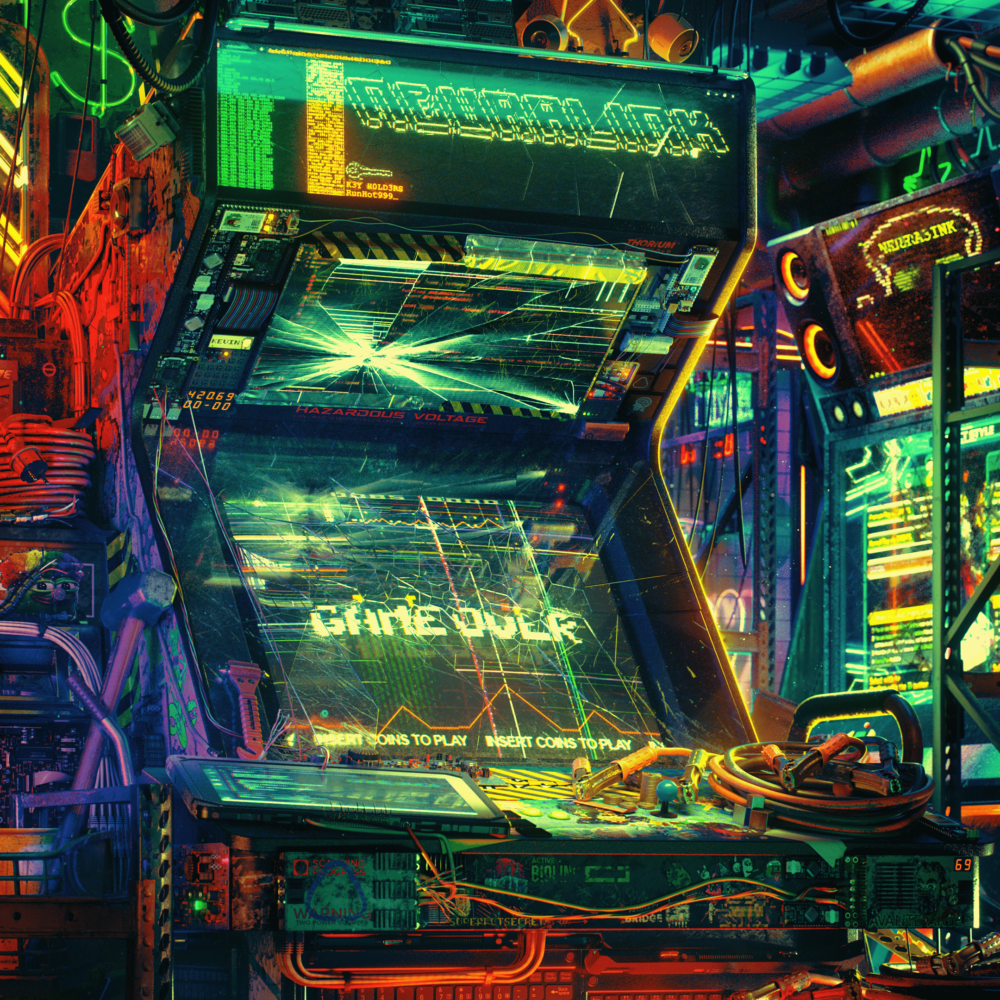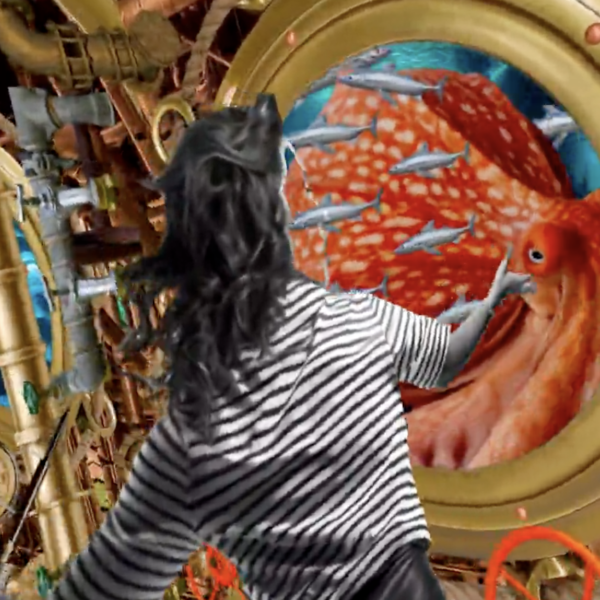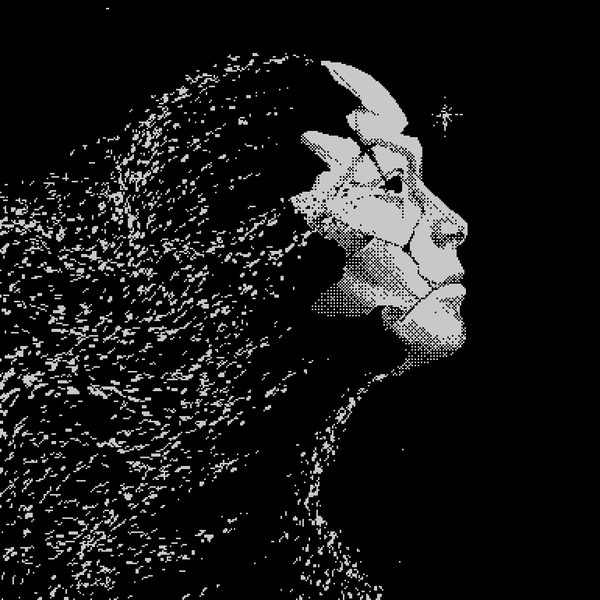NessGraphics on His Fast-Paced Concert Visual Origins
Twenty-seven year old digital artist Alex Ness works in a wide range of modern media, known primarily for his mastery of 3D animation, modeling, and design. From the age of 12, Ness gravitated towards the use of technology to captivate his audience through digital storytelling at varying scales, showcasing his visual art alongside award-winning musicians at globally prominent events and shows. Ness weaves soothing undertones of dystopian and cyberpunk timelessness into his work, and is widely respected as a thought leader in the NFT world. In this interview, we dive into his childhood as a young entrepreneur, what his art smells like, and what Imagine Dragons has to do with cutting class. Please note, this conversation has been edited for brevity and clarity.

Q: How did you get into the art world? Have you always been interested in art?
ALEX NESS: So, I’m 27. I started creating 3D art when I was around 12 or so. I had always been making things and creating some type of art. My mom couldn’t get a cardboard box into the trash because I would want it to make stuff– I was that kid. I’ve just always been making things. Then, I got into 3D art and from there I just did it all the time. It was my favorite thing to do. I was consistently starting these random little businesses when I was young.
There was a time where I was doing a lot of Call of Duty intros for YouTube gamers, funny enough. That was one of the big things that got me into 3D. I was a freshman in high school charging $50 per intro, and making decent money for my age. Then I got more into 3D modeling. I was freelancing for a watch company, creating their watches in 3D– I was jumping around, doing all kinds of just random stuff as a high schooler.
Funny enough for the Imagine Dragon show, I missed school for a month to be at their rehearsals. My professors didn't care because they were like, "You're doing what we're trying to teach you to do, so why would we punish you essentially for leaving to go do something in the real world."
Q: Did you end up going to school for art?
ALEX NESS: I went to college for digital media design and I basically already knew everything I was being taught. In high school, I was doing independent studies where I would be doing 3D design, 3D modeling, and so on for three hours of the high school day. So, in college I was just like, “What am I doing?” The first two years I was just fucking around, doing college stuff and putting no effort into my classes.
Junior and sophomore year we got to the more advanced classes. But again, it was stuff that I already knew. So, at that point I realized I had to do something different. I couldn’t just follow my classmates and come out of school with the same portfolio as everyone else.
That’s when I went from being Alex Ness to starting the brand of NessGraphics, which I still function under now. That was initially me posting my artwork on Instagram. Beeple at the time was an inspiration to me so I started doing everydays, which actually led me to connecting with him and becoming friends with him. Doing everydays and got me to meet different people in the music industry.
And that’s when I got into doing concert visuals for shows. One of my first big shows was doing Imagine Dragons, and I got that through connections that I had with different artists and managers on Instagram. Then from there, the ball just started rolling. Funny enough for the Imagine Dragon show, I missed school for a month to be at their rehearsals. My professors didn’t care because they were like, “You’re doing what we’re trying to teach you to do, so why would we punish you essentially for leaving to go do something in the real world.” It was funny because I just got A’s on the assignments that I wasn’t there for.
Q: What happened after graduation? How did you become the NessGraphics we know today?
ALEX NESS: Once I graduated, I went full steam ahead doing just a shit ton of music industry stuff. 2019, I think, was my biggest year, where there must have been 40 different shows, 25 different artists I worked for. Really large tours like Travis Scott, etc.. Then 2020 happened, and it just fucked everything. I was getting ready for Coachella. I was doing Travis Scott’s show. And then boom, COVID happened, it all got canceled, and then I was doing nothing. I did get to do a couple of projects here and there. Mainly, I was doing a lot of stuff for Megan Thee Stallion and Lil Uzi Vert.
I think it was August of 2020 when I saw NFTs happening. I think it was KidMograph and Gavin Shapiro on Instagram that I saw and I was just like, “What the fuck is this?” I started looking into it, and at first I did not understand it. I was like, “Why the fuck are people paying this much?” Then it started to just really make sense to me, and I jumped into it, and here we are.
It’s very different because coming from the music industry world, I’m used to having my visuals projected in a huge way, like my artwork on the Grammy screen for Lil Nas X. Also, that Grammy’s screen job was also 100% me, so that was stressful. I was up till 9:00 AM working, getting two hours of sleep and repeating. It sucked. But it was fun. That screen I believe is 400 or 300 feet wide or something, and it wraps around the whole place. And then of course at Coachella, those screens also are massive. They’re a couple hundred feet, I think 200 or 250, something like that. And then coming to doing all NFTs and stuff where the most of my art is shown on a 65 inch screen. So, it’s been a little different.
Did I think it would completely switch, where it'd be the artist first and music essentially second? Not really.
Q: Did you have the thought while you were working with all these musical artists that you would be recognized as your own brand? That you would be doing something for a Diplo or a Megan Thee Stallion, and it would be immediately apparent that they were projecting a Ness piece of work?
ALEX NESS: I mean, I was already starting to make a bit of my name in the industry, especially with Travis Scott and other shows, where people would know if a show was essentially my art or not. Did I think it would completely switch, where it’d be the artist first and music essentially second? Not really. I think I always had hopes of that. That’s ultimately what I would like. But it wasn’t really like that, even for the massive people. Even Beeple. Beeple was still working for people.
Q: Would you give advice to an artist, especially a digital artist, to enter through the route you took?
ALEX NESS: It depends. If you want to work your fucking ass off and get no sleep, then yes. It’s really rewarding, but it’s also incredibly stressful and it doesn’t pay nearly as well as people think. You just have to work your fucking ass off. At the end of the year it might look like, “Oh, this is actually a really good amount for my age, making 120 to 150 or something like that.” Then you look back at how many hours you put in and you’re like, “That’s underpaid.” That being said, as you get more and more into it, you can charge more and be more picky.
At the end of the day, the amount of work you’re putting in is a shit ton. That being said, it’s fun. I really liked it, especially when I was younger, when I was in my early twenties. Not that I’m old now, but still, even a couple years makes a big difference. It is draining. But yeah, I mean, I would recommend it. Just be ready for a shitshow, essentially.
I mean, ultimately how it works is we’re getting this job done and it’s done on this date, whether we like it or not. It’s not like commercial work or working at a studio and where you’re like, “Oh, it’s five o’clock. I’ll finish this tomorrow. Bye.” When we have artists working with us, maybe it’s nine o’clock, and they’re like, “I’m tired, I’m going to go back,” it’s like, what do you mean? We’re getting this done. We’re working until 3:00 AM again tonight. And tomorrow again, 3:00 AM. And repeat. It needs to be done. It’s very different from most other kinds of creative work, I would say. It’s always interesting when we get a new person working with us who maybe comes from the studio side and it’s just completely different.
I want you to be overwhelmed or overstimulated, which at the same time can also have a hypnotic effect when you stare at my art.
Q: Can you comment on the NessGraphics style? What is that to you? If someone was learning about you for the first time, where did that style come from?
ALEX NESS: I would say there’s no particular style involved with it. It’s not necessarily just one kind of thing. Most of my art, whether it’s the cyberpunk vibe or city vibe or nature or whatever, I want you to feel overwhelmed when you’re looking at it. Like, the opposite of other art, where it’s supposed to feel more hypnotic or relaxed. I want you to basically feel the opposite.
I want you to be overwhelmed or overstimulated, which at the same time can also have a hypnotic effect when you stare at my art. So, it’s more about that, just that overwhelming feeling and this grittiness and grossness. I remember there was this Twitter thread where somebody said, “What does your art smell like?” And everyone was responding. They’re all responding, “fresh baked bread,” or, “fresh baked cookies,” and other people are like, “smelling flowers,” or, “fresh laundry.” I responded, “moldy bagel with cream cheese.”
That’s what I want my art to be like, just moldy cheese. Literally anything that would make you maybe a little repulsed and gag a little bit while you’re smelling it is what I would want my art to smell and be like. So, the opposite of typical art.


